Dispatch From Honduras: The Devastating Aftermath of Eta and Iota
Carlos Raul Cruz Zelaya on the physical and psychological hardship that endures
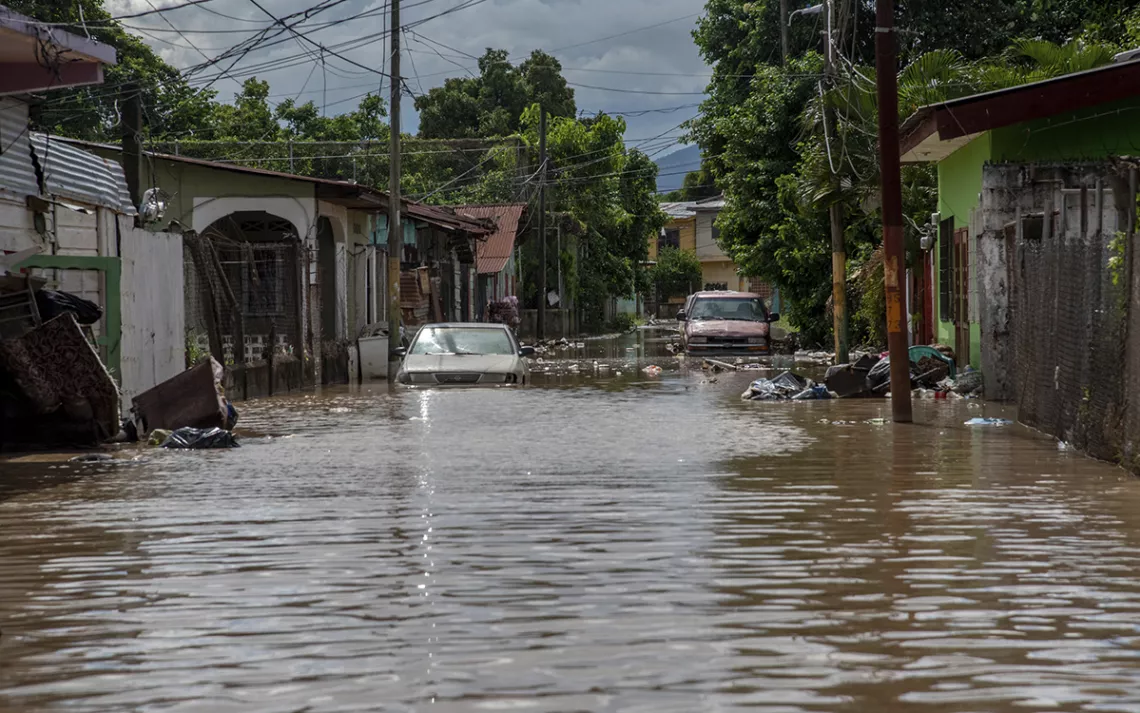
Hurricane Iota hit the Nicaraguan coast on November 16 as a Category 4 storm. | Photo by Seth Sidney Berry/Sopa Images/Sipa USA via AP Photo
Eta, a Category 4 hurricane, made landfall in Honduras on November 3. Less than two weeks later, Iota — also a Category 4—landed in its wake. The damage in Honduras was incalculable. Just two of the hurricanes during a record-setting season of 29, the storms quickly faded from international headlines dominated by the US election and a global pandemic. But the Central American nation will be rebuilding from the unprecedented national disaster for years. Doctor Carlos Raul Cruz Zelaya is a first responder with the nonprofit Honduras Compassion Partners. He participated in rescue missions in northern Honduras, where the flooding was most severe, for two weeks following the storms. His dispatch has been lightly edited for clarity and length.
The first thing I noticed when I arrived were the dead animals. I remember a cow that had drowned caught in the bow of a tree. It was four meters above the waterline. It must have gotten caught there when the water was at its highest point immediately after the hurricane. We saw pigs, cows, sheep. The stench of death was omnipresent. We spotted crocodiles at times in the floodwater, seeking carrion to feed on. I don’t have the words to describe the scene other than to say it was utter devastation: infrastructure completely wiped out, kilometers of houses destroyed, entire cities buried in water.
The most heart-breaking aspect of the situation was how unprepared we were as a nation. Usually in October we have national holidays. Everyone goes on vacation or to visit family. All the shops have sales, and it’s a big week for businesses. Coronavirus lockdowns made that impossible this year. The holidays were rescheduled by the government for November. The government was encouraging everyone to shop, to travel, to visit relatives. And even as Hurricane Eta approached, and as Nicaragua and El Salvador told people to take shelter and evacuate danger zones, our government was still encouraging people to shop. It was the height of irresponsibility.
And so when the hurricanes made landfall, the population was completely unprepared. The result was catastrophic. We found a group of 75 people all trapped on an overpass shortly after the first storm. They had been traveling and were caught there when the storm hit. They had headed to the highest ground they could immediately find.
The international airport at San Pedro Sula was inundated completely. As of December 3, it was still inoperable. The UN estimated that broken cell towers and destroyed phone lines left 300,000 people without communications. Many of the cities were transformed into isolated islands from the extensive flooding, completely cut off from the rest of the country.
Transportation was a critical logistical problem. We used helicopters, trucks, speedboats, and whatever else we could find to reach affected communities, searching for those trapped, sometimes on foot when no other option was available. It was exhausting, dangerous work, and the second hurricane forced us to start all over again from where we began, as previously safe areas experienced flooding from a second round of tropical storms.
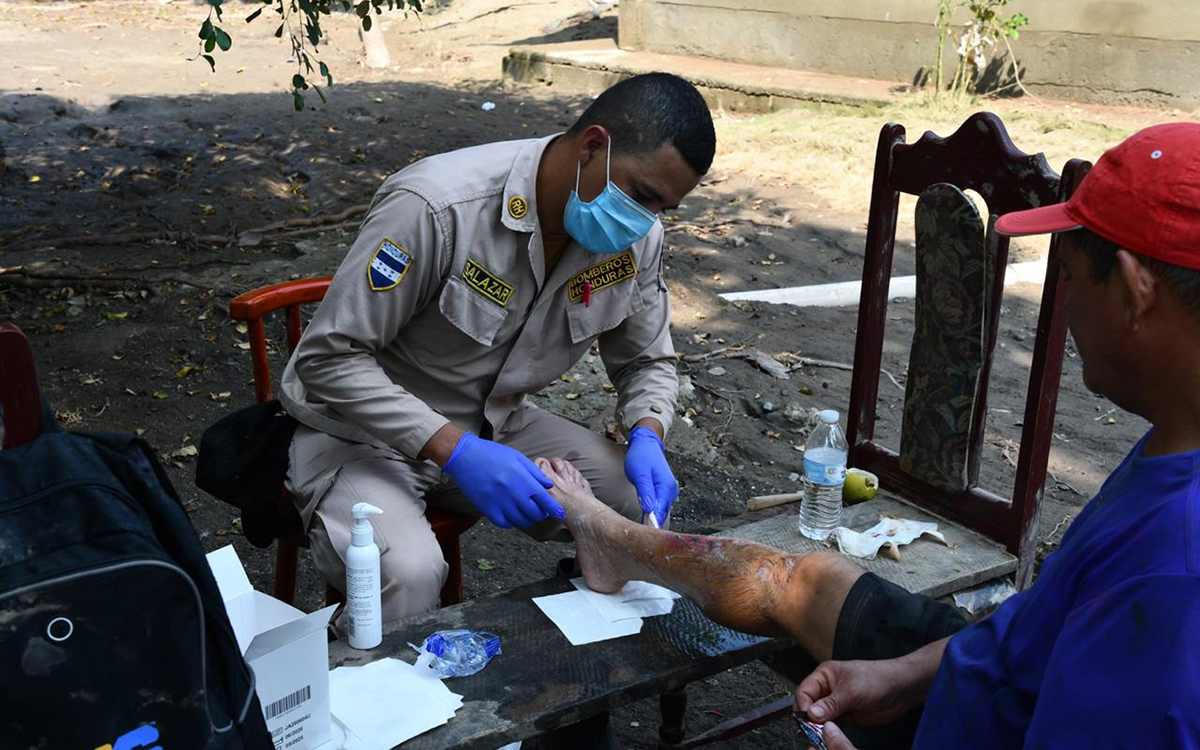
A member of Dr. Carlos Raul Cruz Zelaya’s team treats an injured leg. | Photo courtesy of Dr. Carlos Raul Cruz Zelaya
As the second hurricane, Iota, approached Central America, Honduras was already completely inundated with water. I remember being at the hotel room in the evening before the landfall. Communication with official sources was limited to a short-range radio we carried. There was no cellphone service in the crisis areas. I was watching the television as it showed the approach of Iota. The government had announced evacuation zones, I suppose in an attempt to act more responsibly. When the map came up of the areas that were being ordered to evacuate, it was the entire country. Honduras was a giant red zone.
I remember thinking, “Where are we supposed to evacuate to?”
Things were worse after that. The second storm raised the water levels in the valley areas of the north again. It’s difficult to describe the psychological effects the second landing brought. We haven’t been hit by two successive storms that large since weather records have been kept. And all of this just on the heels of the coronavirus pandemic. We treated physical wounds, gave out antibiotics, provided basic medical attention, and rescued trapped families. But the mental wounds of our nation are going to take longer to recover from. A lot of people lost everything, and after a year of global plague and record low confidence in the government, that psychological trauma won’t be easy to recover from.
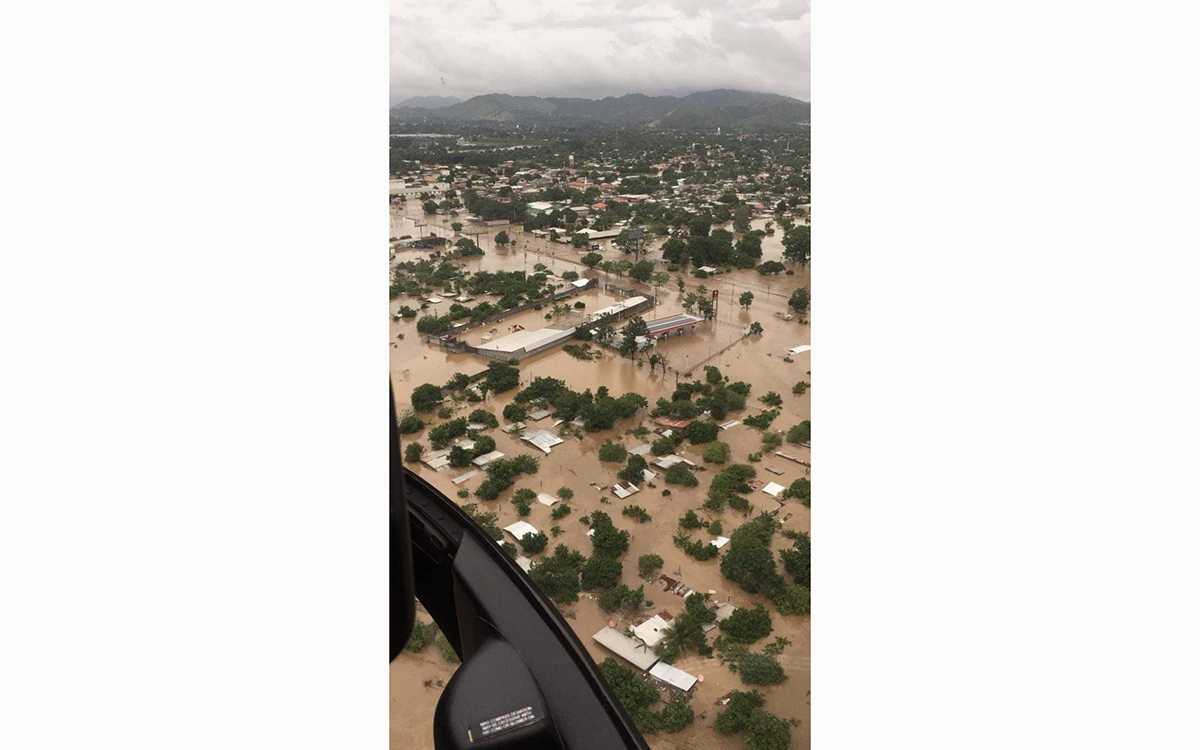
Photo courtesy of Dr. Carlos Raul Cruz Zelaya
There was no coordinated federal response in the aftermath of the disaster, either. NGOs and foreign governments sent some aid, but government efforts were improvised and disorganized. My team was attached to a group of firefighters from San Pedro Sula. They were incredibly brave guys who did an amazing job, especially on rescue missions. Despite the fact that they were operating with almost no resources, they had a mantra: “We leave no one behind. We stay until the last family is rescued.”
For two weeks our team braved not just physical danger but also COVID-19. Oftentimes we were forced into close contact with wounded people who had no way to take preventive measures. Or we were forced to transport rescuees in cramped and crowded conditions. Masks and PPE were not an option for a family trapped in a flood zone, sometimes with wounded family members.
The worst affected areas I saw were in and around Choloma (north of San Pedro Sula). Entire neighborhoods were only accessible by boat or helicopter. People waited on roofs, unable to call for help.
Much of Honduras is still underwater. As of December 3, there were still 90,000 people in shelters. Almost a third of the country was displaced by the storm. The waters haven’t receded enough for an accurate survey of how many homes were destroyed, but I can tell you based on what I saw that the damage is almost unimaginable.
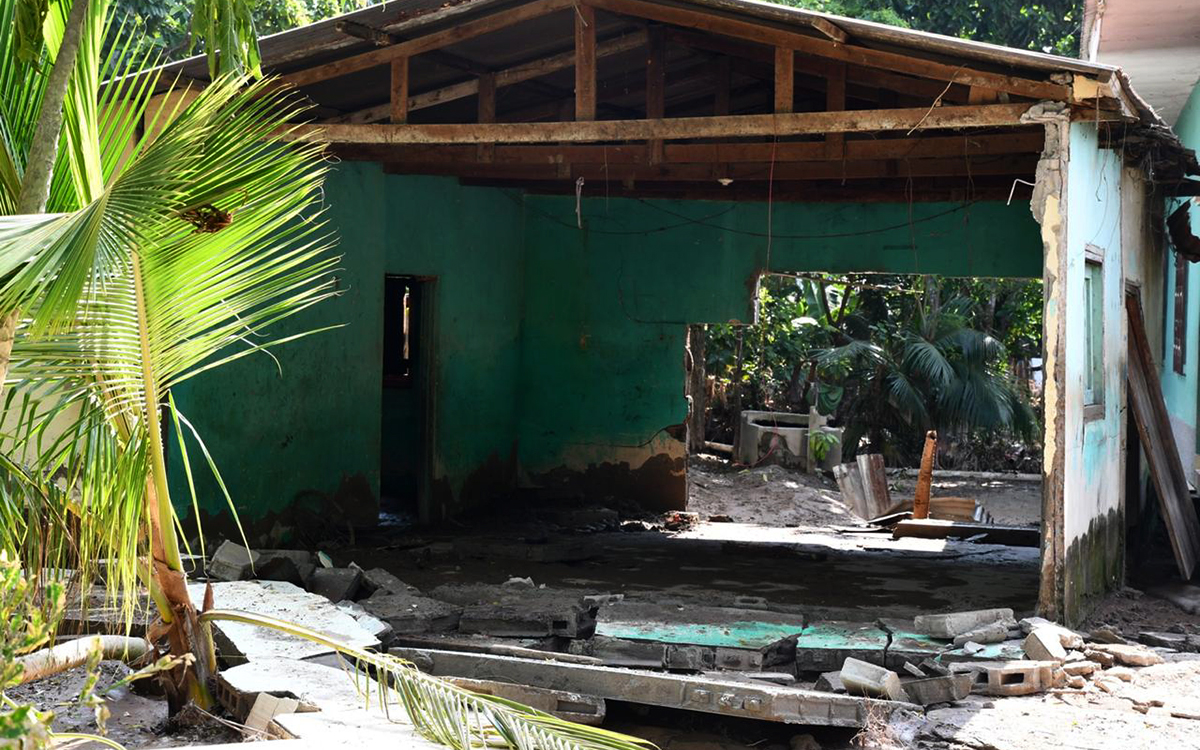
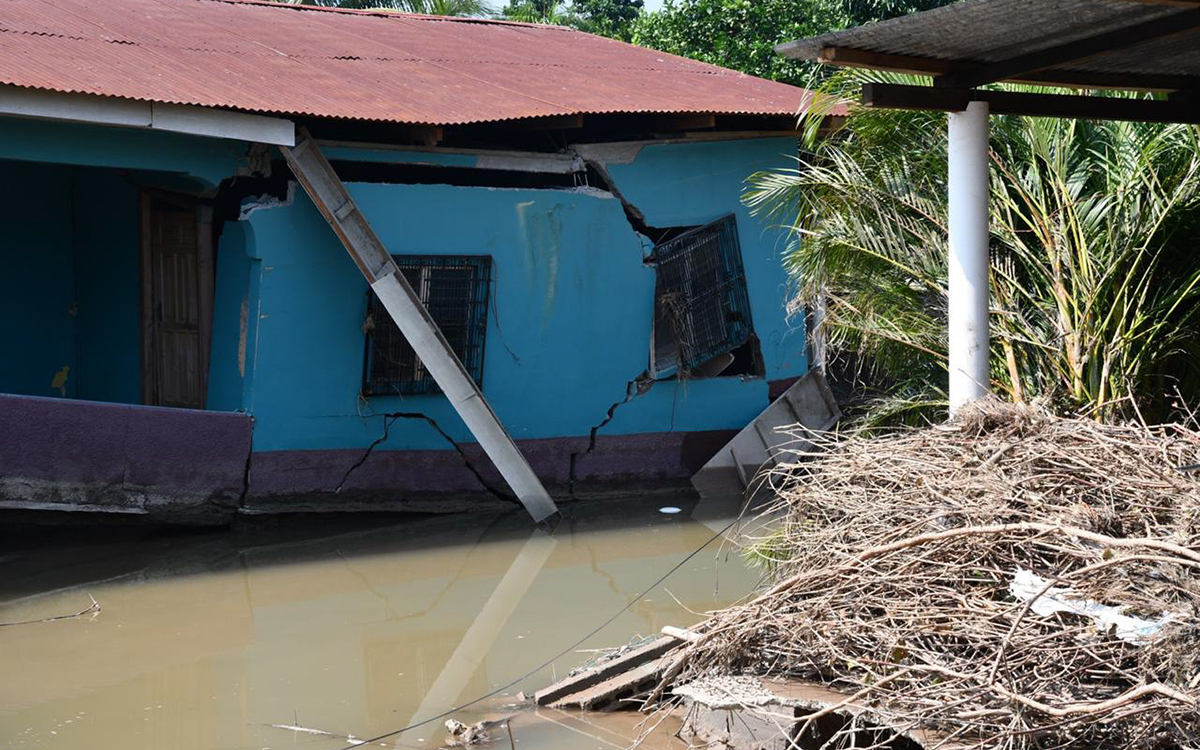
Photos courtesy of Dr. Carlos Raul Cruz Zelaya
I fear for what this means in the future. The Honduran economy is driven principally by agriculture: bananas, rice, cattle farming, coffee. Those crops are all destroyed. Not only does that mean people lost their entire livelihoods, it means Honduras has lost an entire season of harvests. The blow to our economy still isn’t understood, but we will be recovering from this devastation for years to come. Think about this: In 1998, Hurricane Mitch destroyed our banana crops. In 2020, over 20 years later, we had only recovered 50 percent of that production capability.
This damage is far more extensive. We have lost an entire generation of progress.
I’m in El Salvador now, taking a much-needed rest with my family. I am exhausted. I was tested for COVID, and I am negative. That was one of my biggest worries. I’m glad to be safe, and I'm proud of the work we did. But I am also angry at the government. They didn’t create the storm, but their actions made its impacts much worse. Honduras has a long history of corruption as well, especially involving foreign aid, and I fear a lot of the resources being managed by the government will never reach its intended recipients, the people.
I fear for my country. We are a resilient people. But now we must rebuild from nothing.
 The Magazine of The Sierra Club
The Magazine of The Sierra Club



